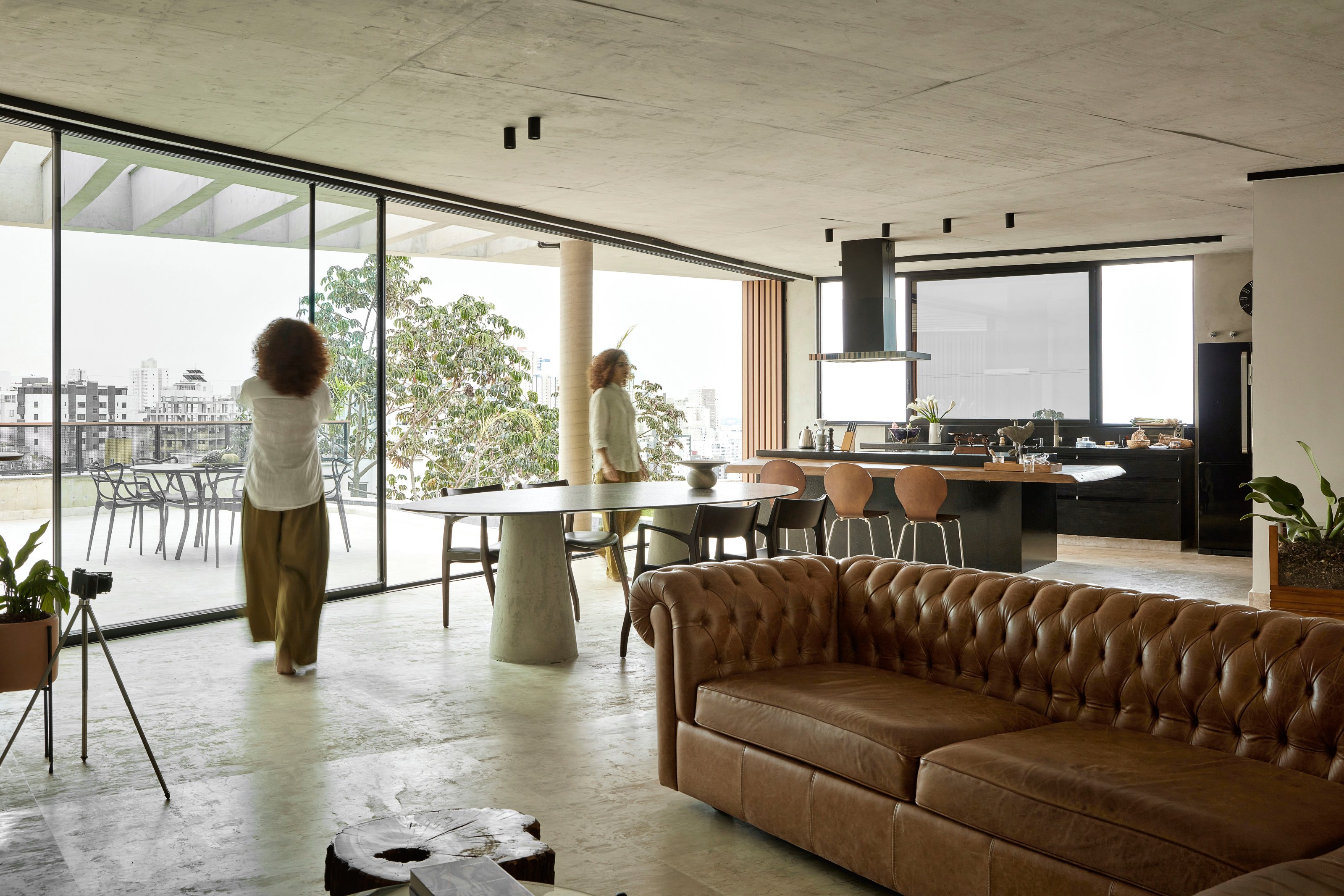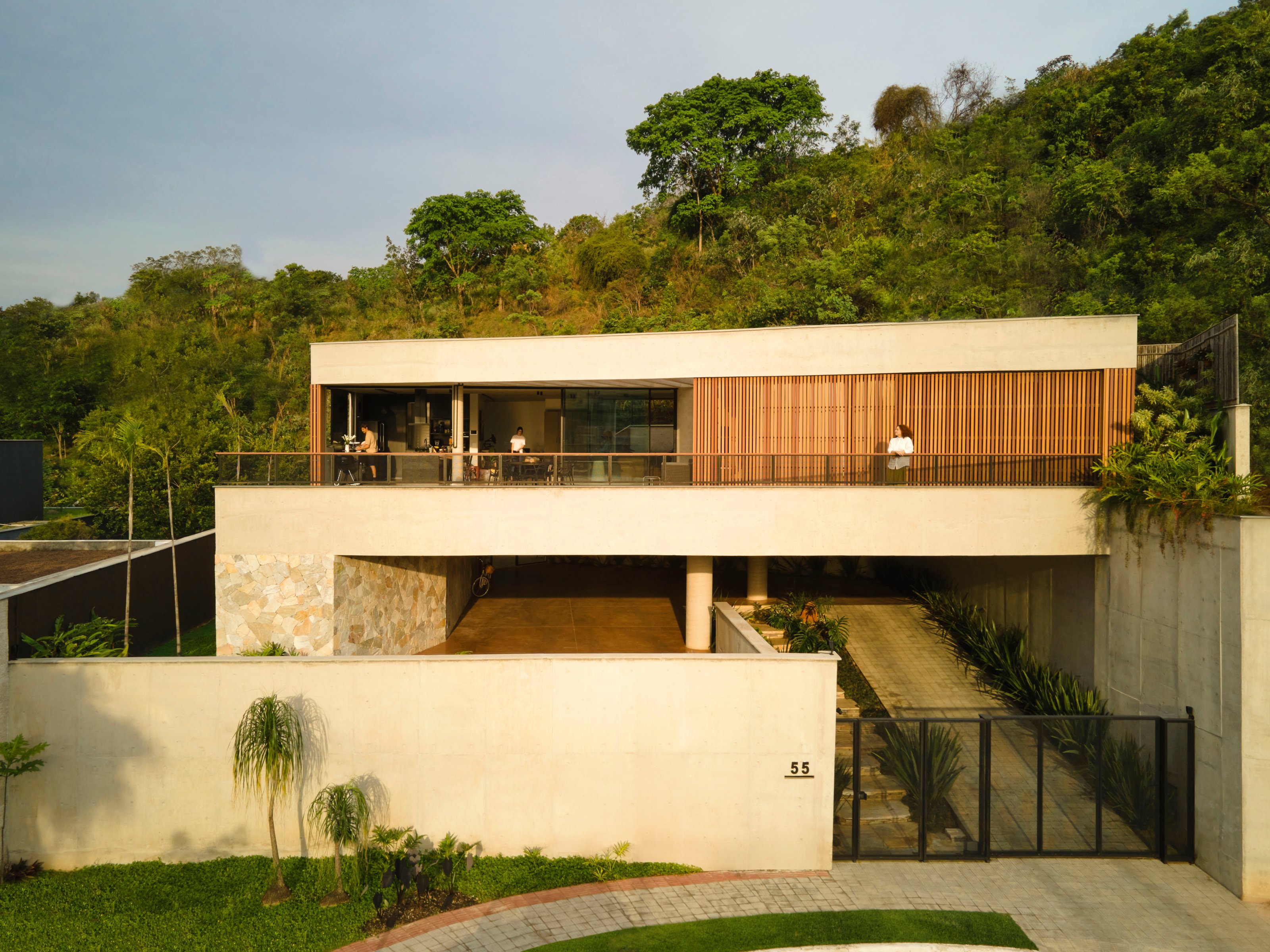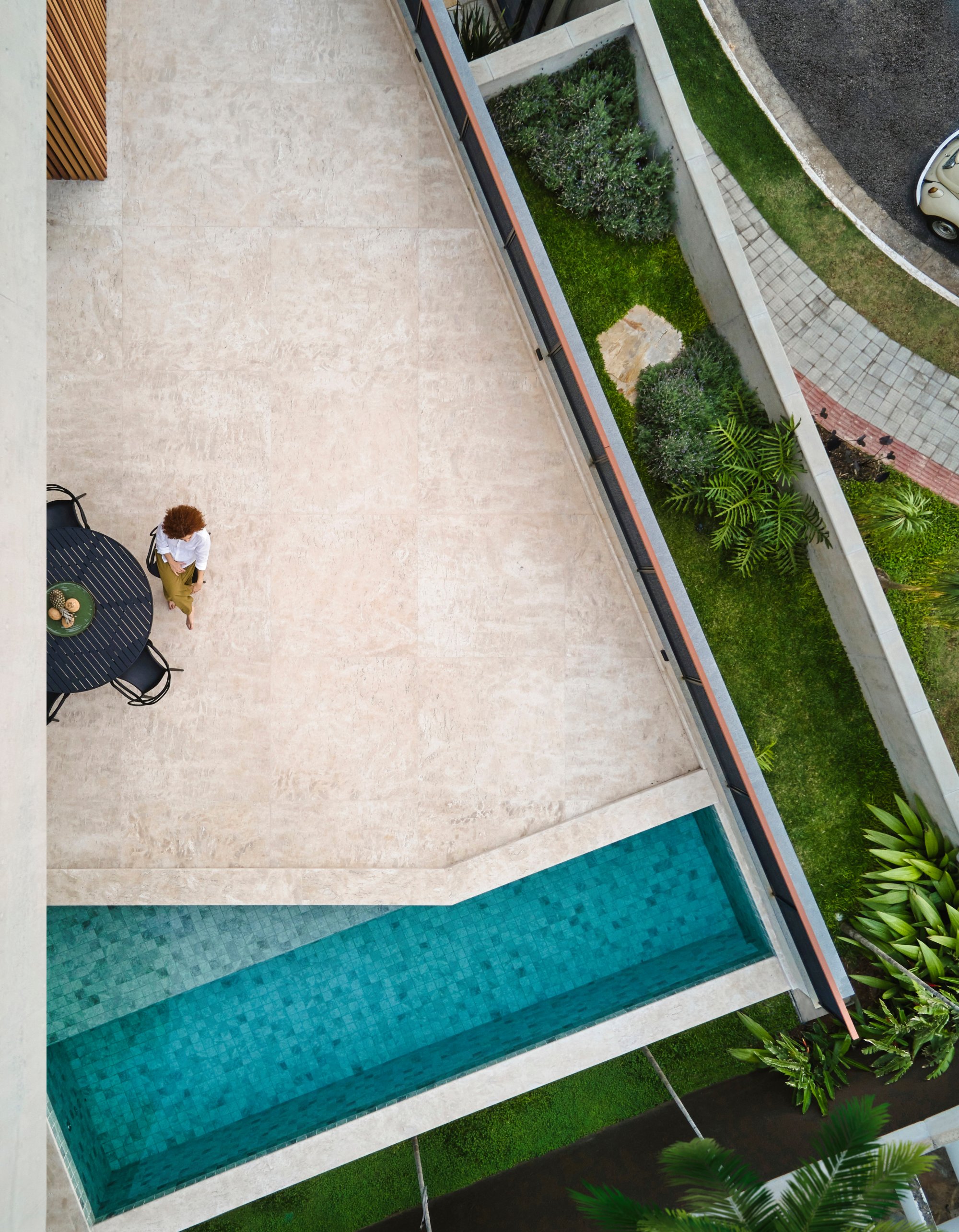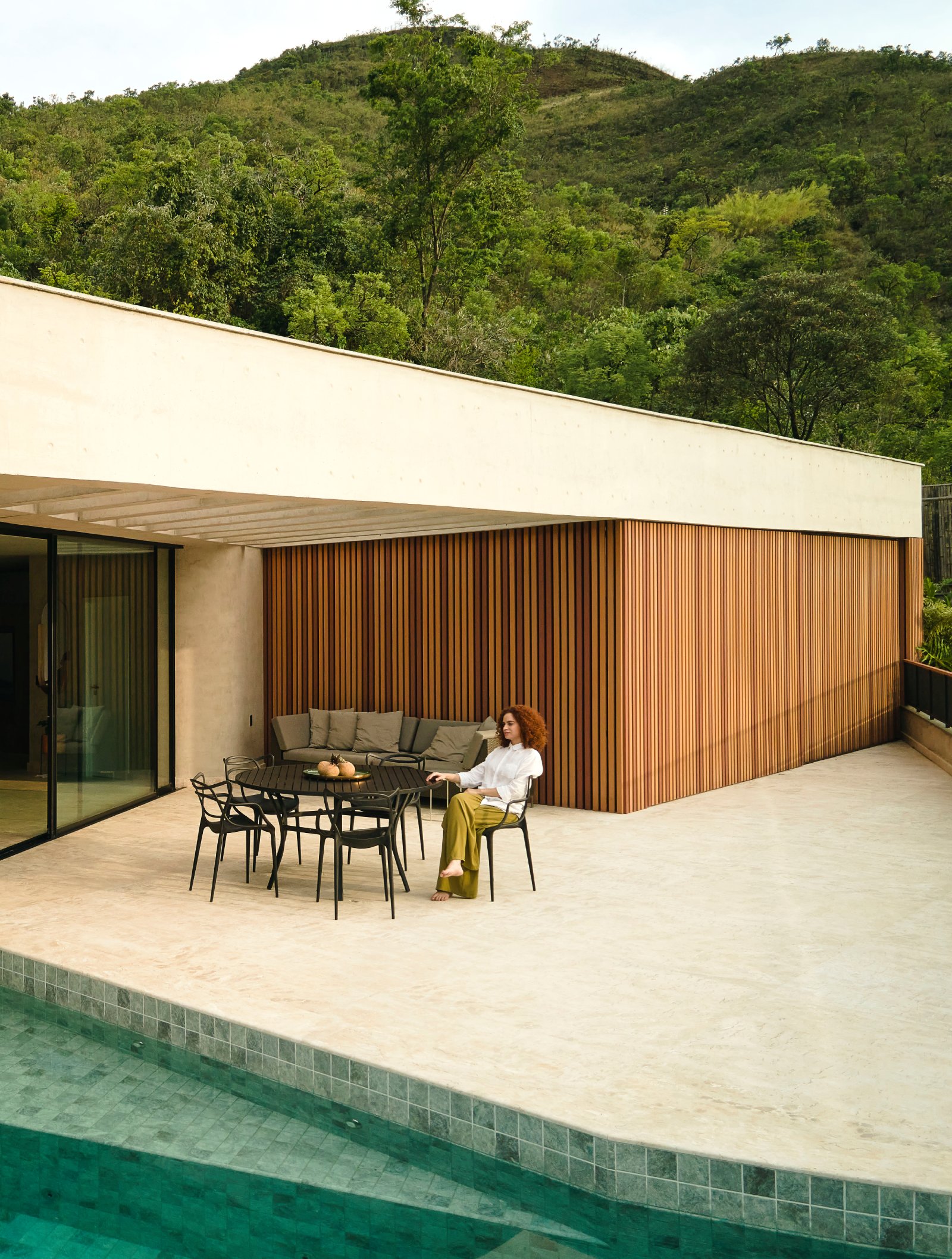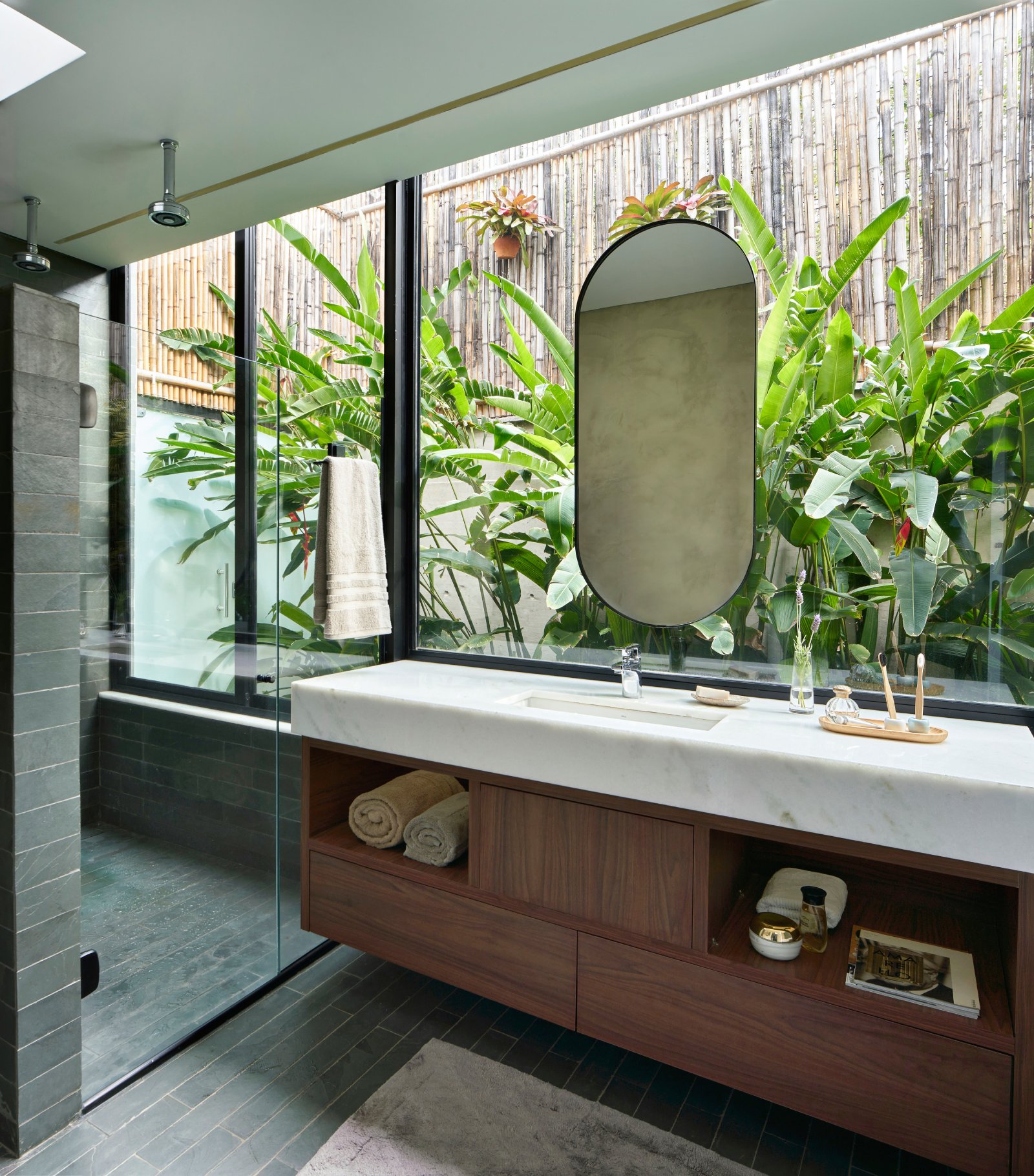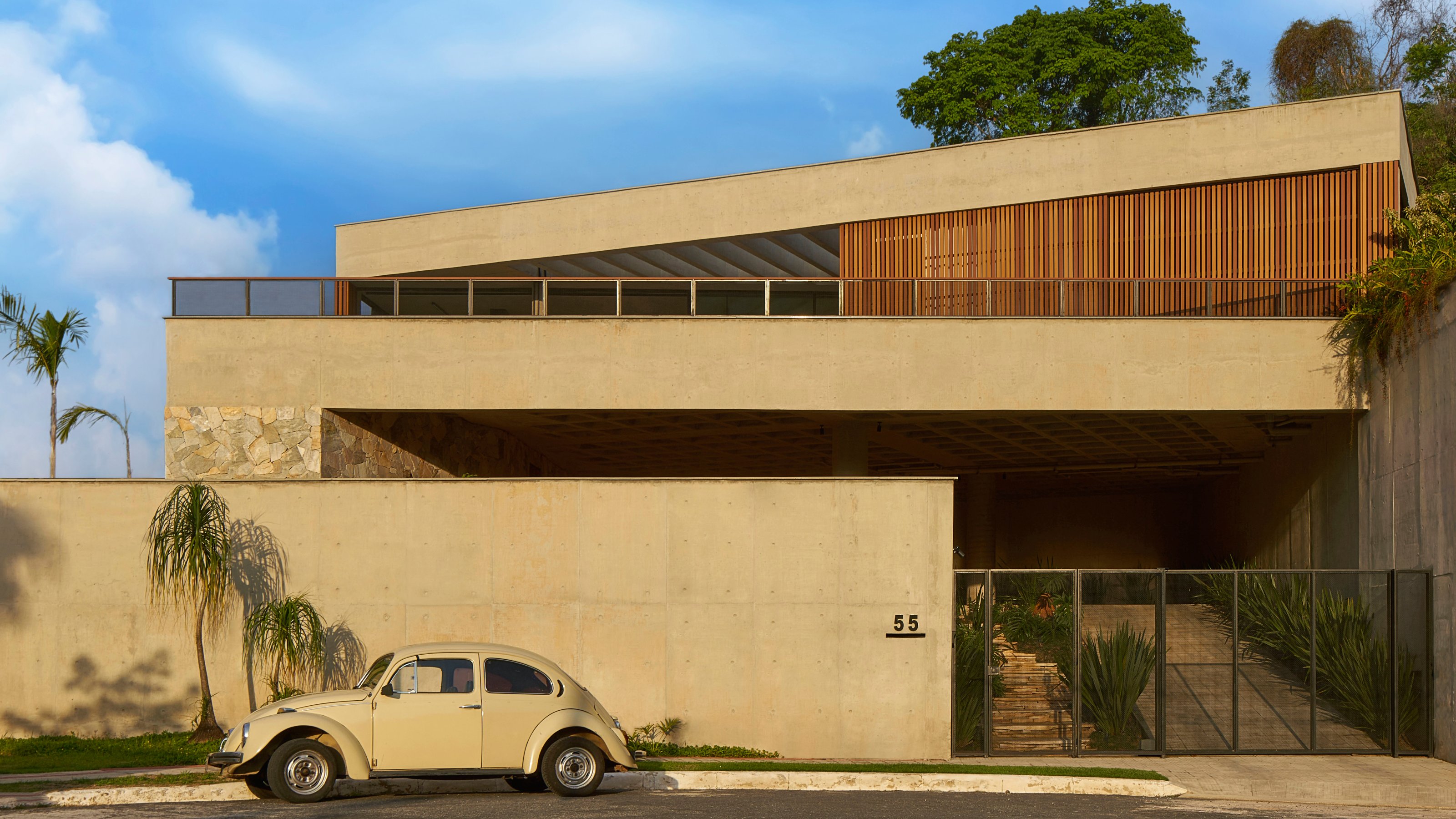
Estúdio Zargos’ latest family house in Belo Horizonte, Casa Prática, was designed to accommodate an existing site for an unbuilt house, complete with slab and elevations. The architects’ approach was to raise up the accommodation, inside and out, to form a new ground level above a concrete undercroft.
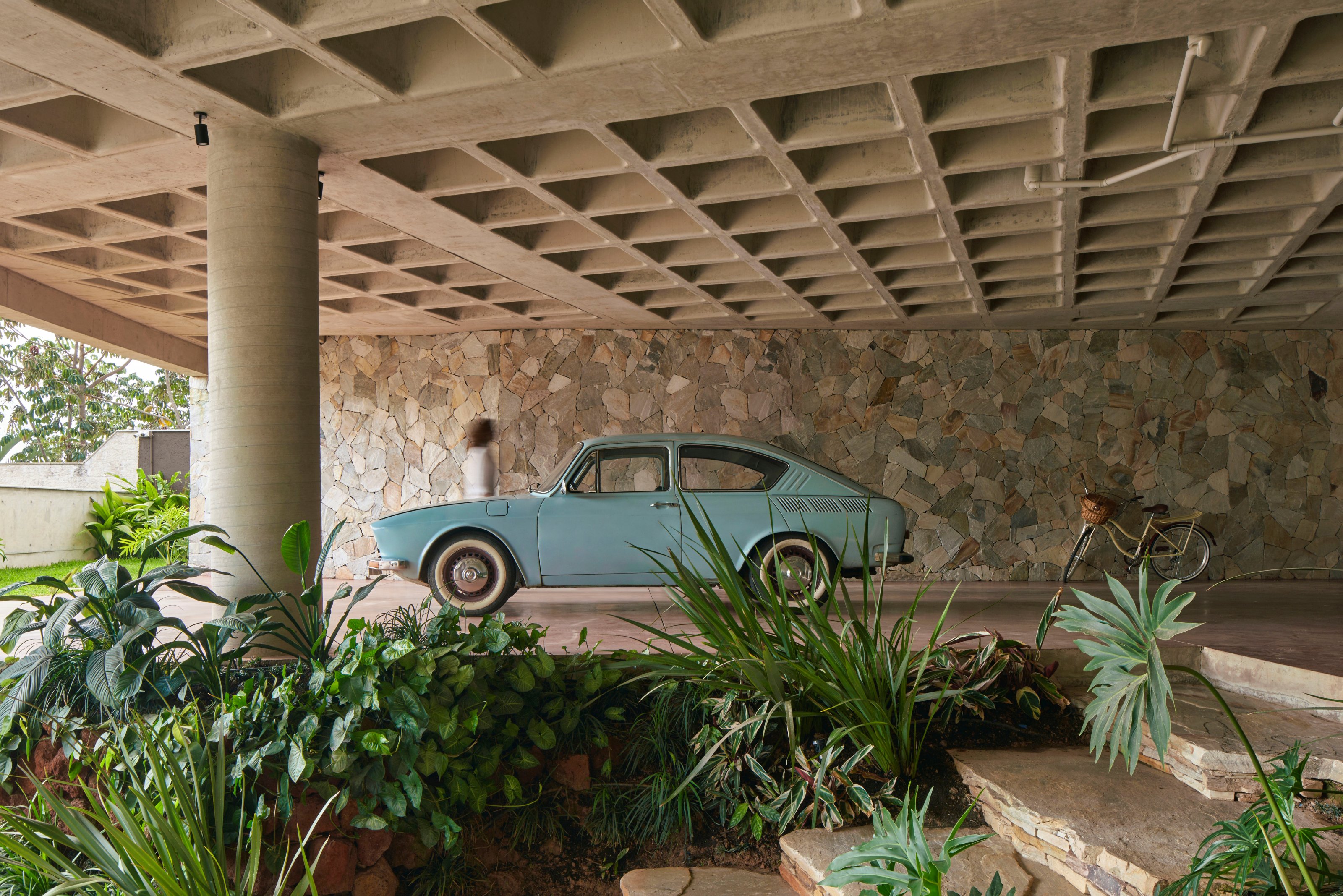
Casa Prática by Estúdio Zargos
Casa Prática is set at the end of a dead-end street; behind the house, the landscape rises suddenly, creating a hilly green backdrop to the architecture. The material and colour palettes are kept natural and low-key, with the hard landscaping scattered with planters and greenery fringing the site to blur the boundary between garden and terrain.
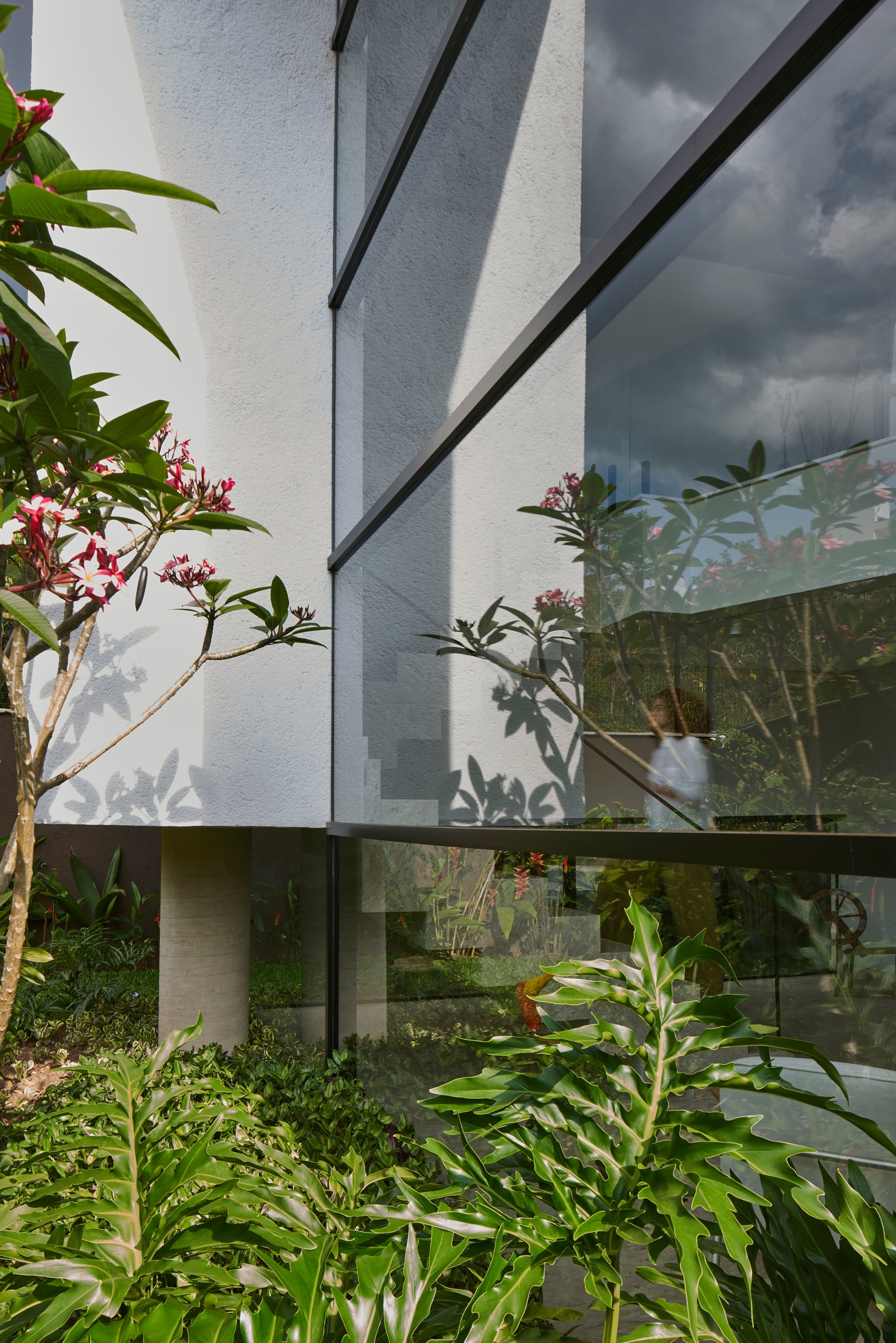
The architects describe the project as ‘concise, cohesive and coherent’, with a simple layout that exploits the existing site conditions without compromising the accommodation. The house is therefore elevated up above the regular street, with the entrance level accessed by vehicle ramp and a set of steps, set behind the obligatory high walls. These lead to the covered courtyard, which serves as a parking area, as well as containing storage, staff accommodation and utilities.
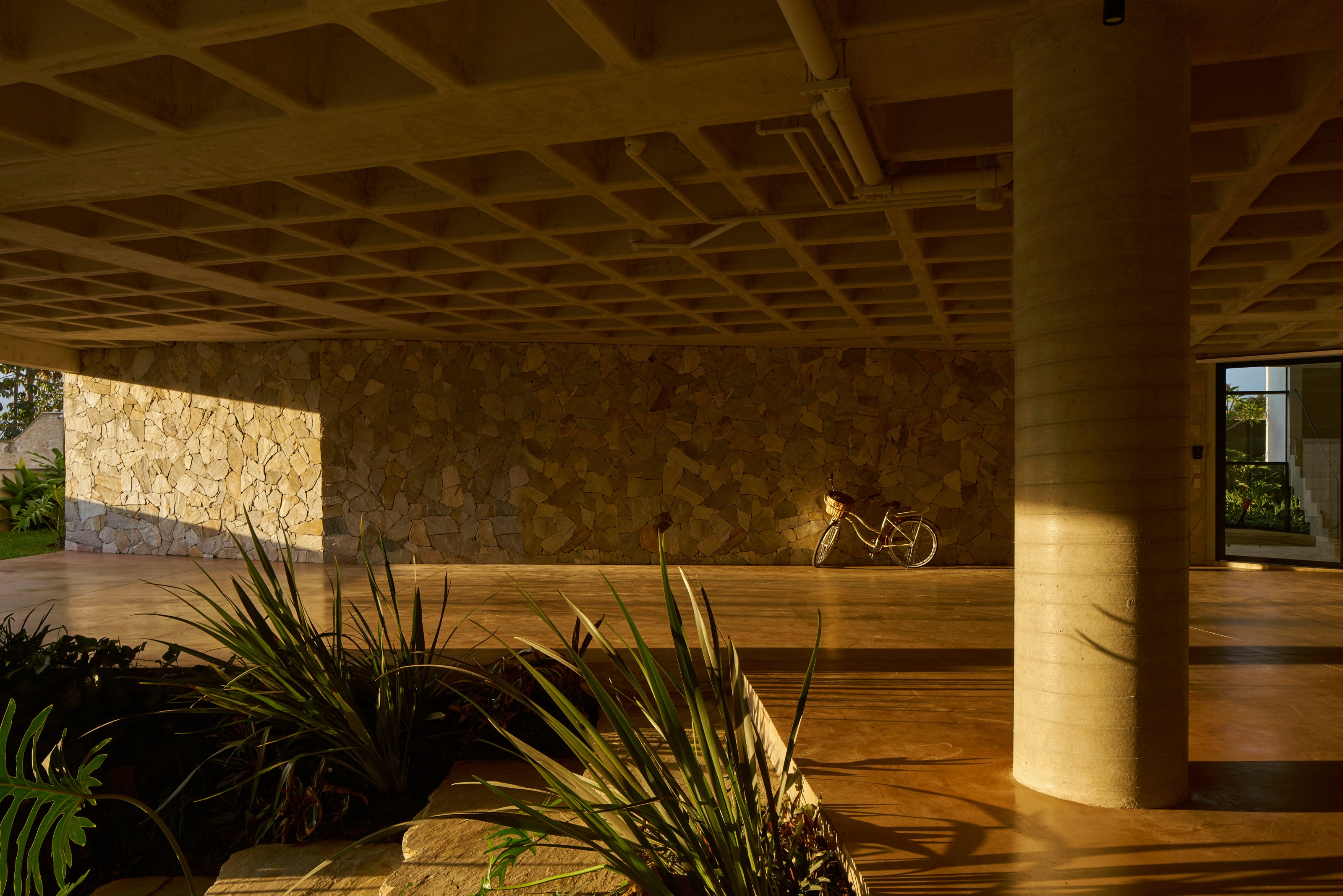
The main staircase is set in one corner of the trapezoid-shaped plan, a stone structure flanked by full-height windows. This leads up to the expansive second floor, complete with open-plan living and dining, off which is a large triangular terrace. A small lap pool is slotted into the edge of this outdoor area, as well as a covered section for al fresco dining.
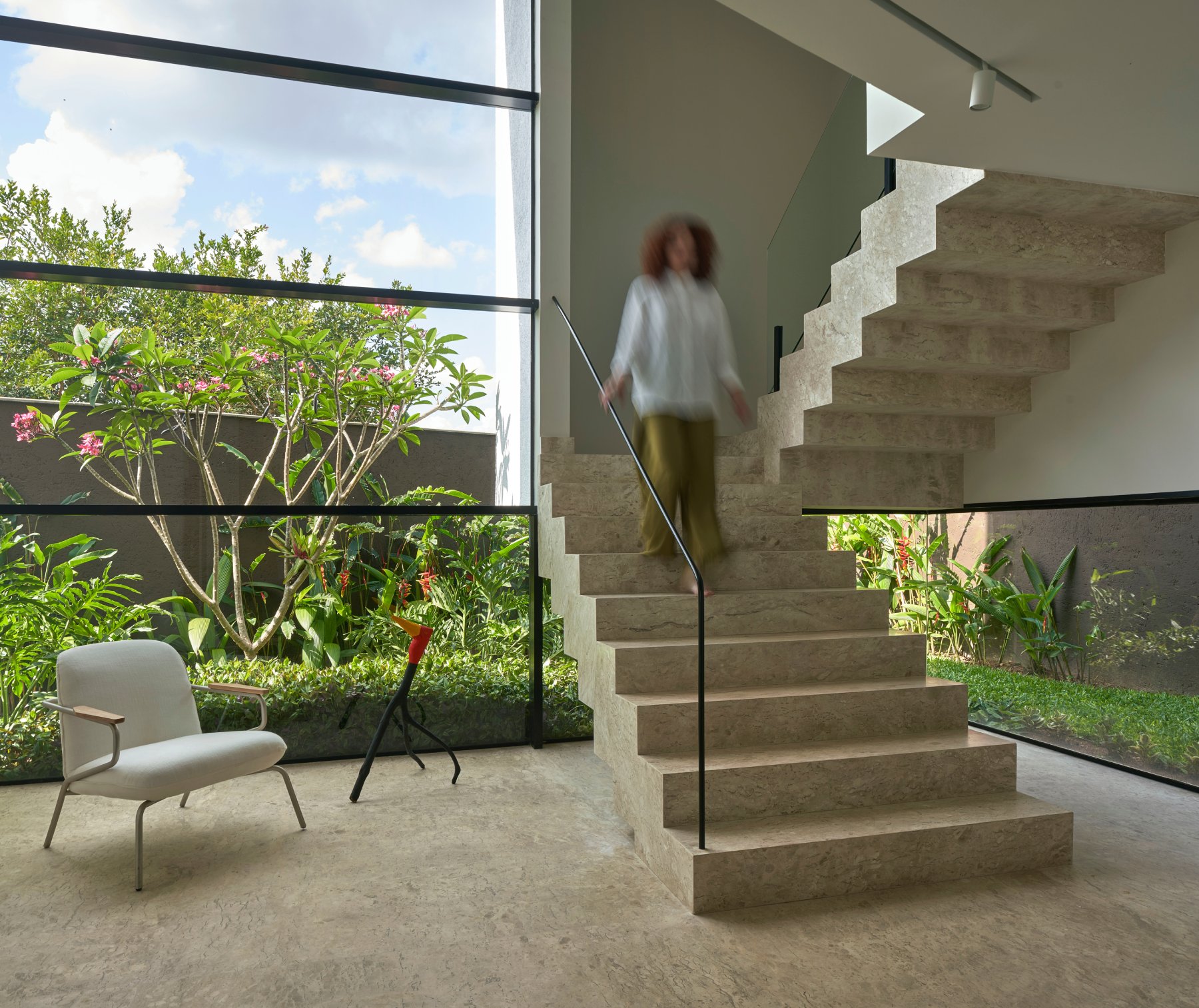
Four bedrooms are arranged at the southern end of the floorplan, with three given direct access to a slender balcony tucked beneath the roof plane. The principal bedroom has direct access to the main terrace, with a large full-height sliding screen of slatted timber providing complete privacy when needed.
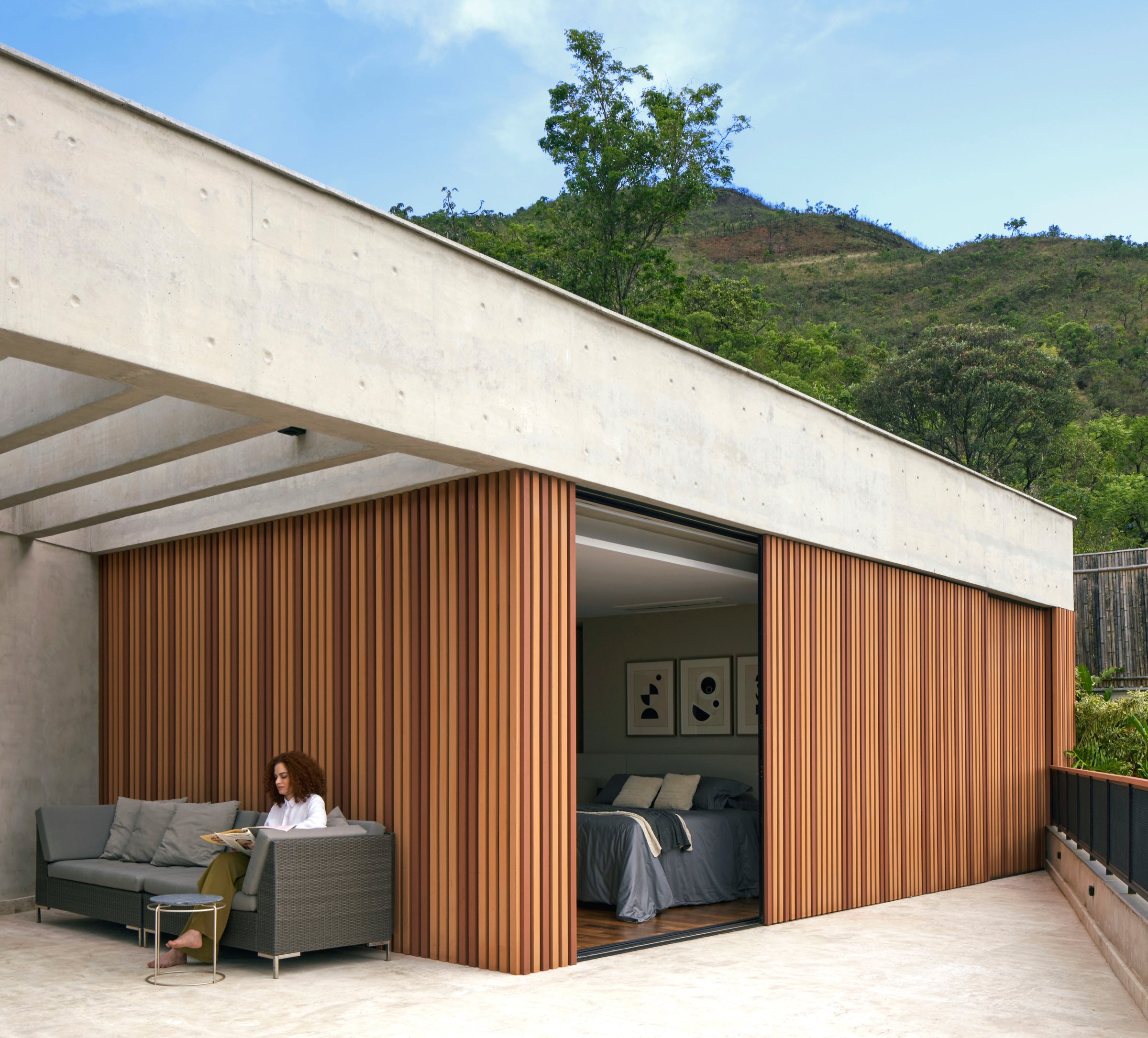
Interior finishes match exterior ones, from poured and precast concrete to stone and timber. Set high on the edges of the city, the terrace and living room overlook Belo Horizonte’s densely populated skyline to the north. The house offers up what the architects call a ‘simultaneous dialogue’ between the city and the landscape, a peaceful, verdant frame from which to observe the bright city lights.
